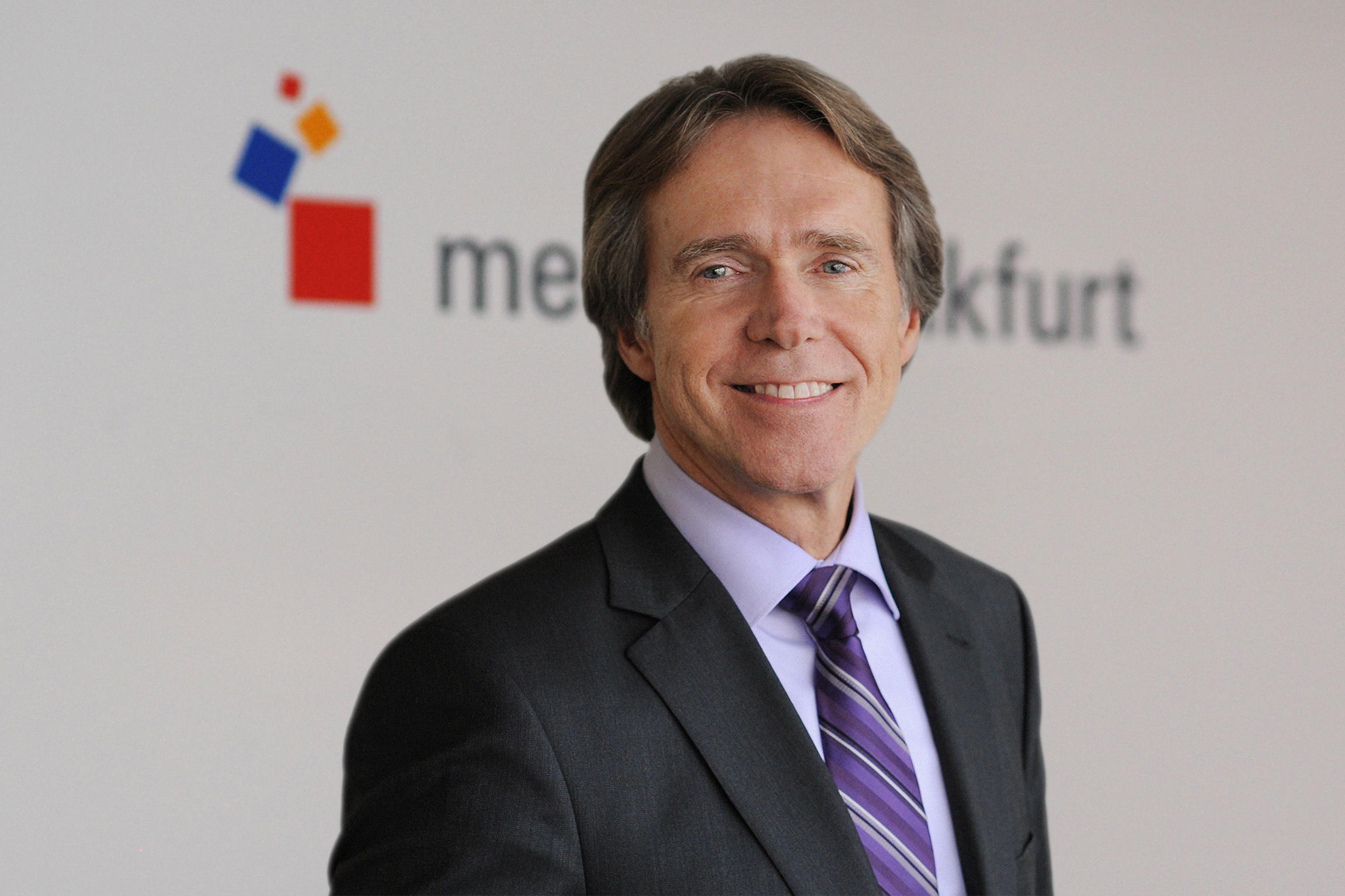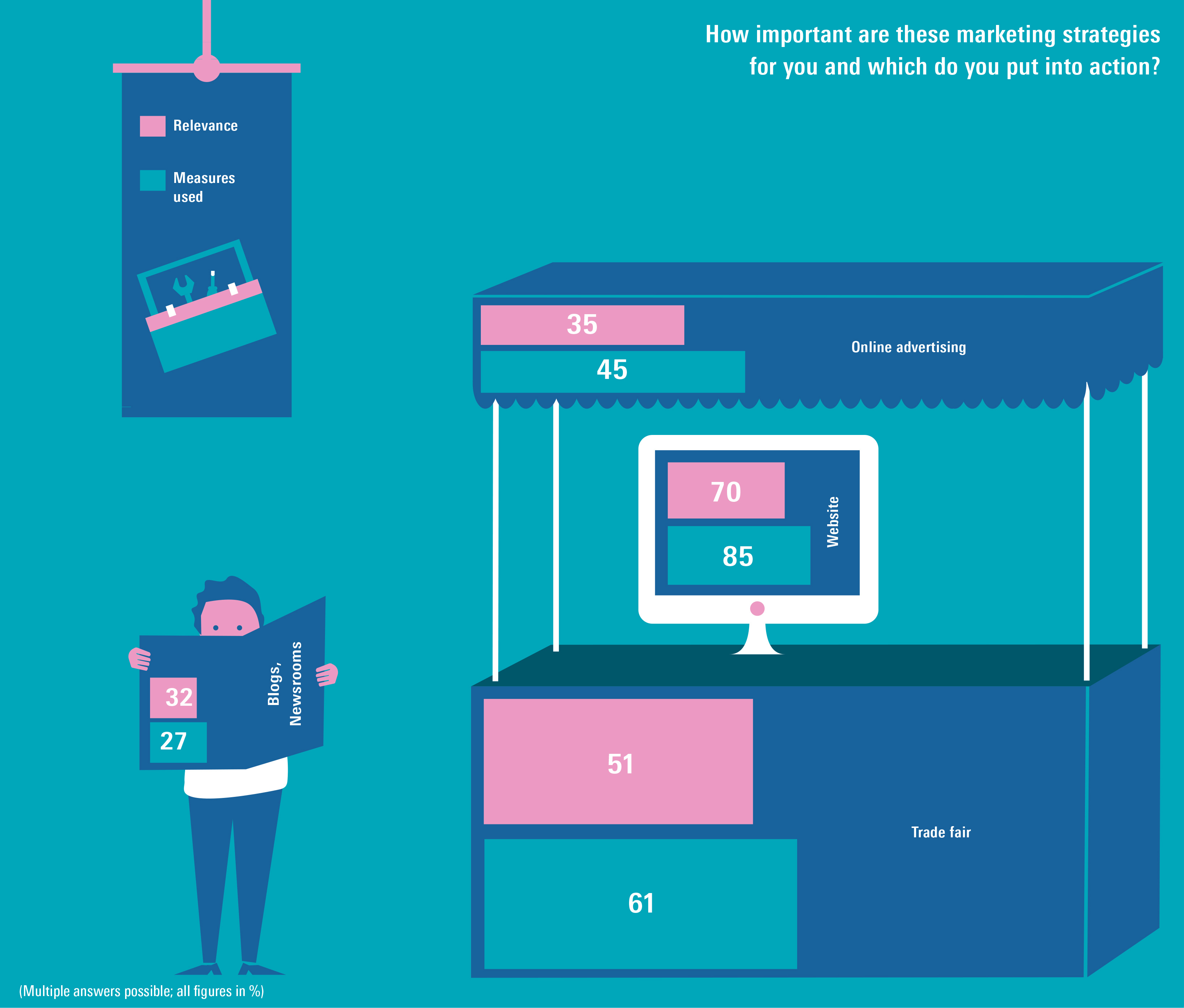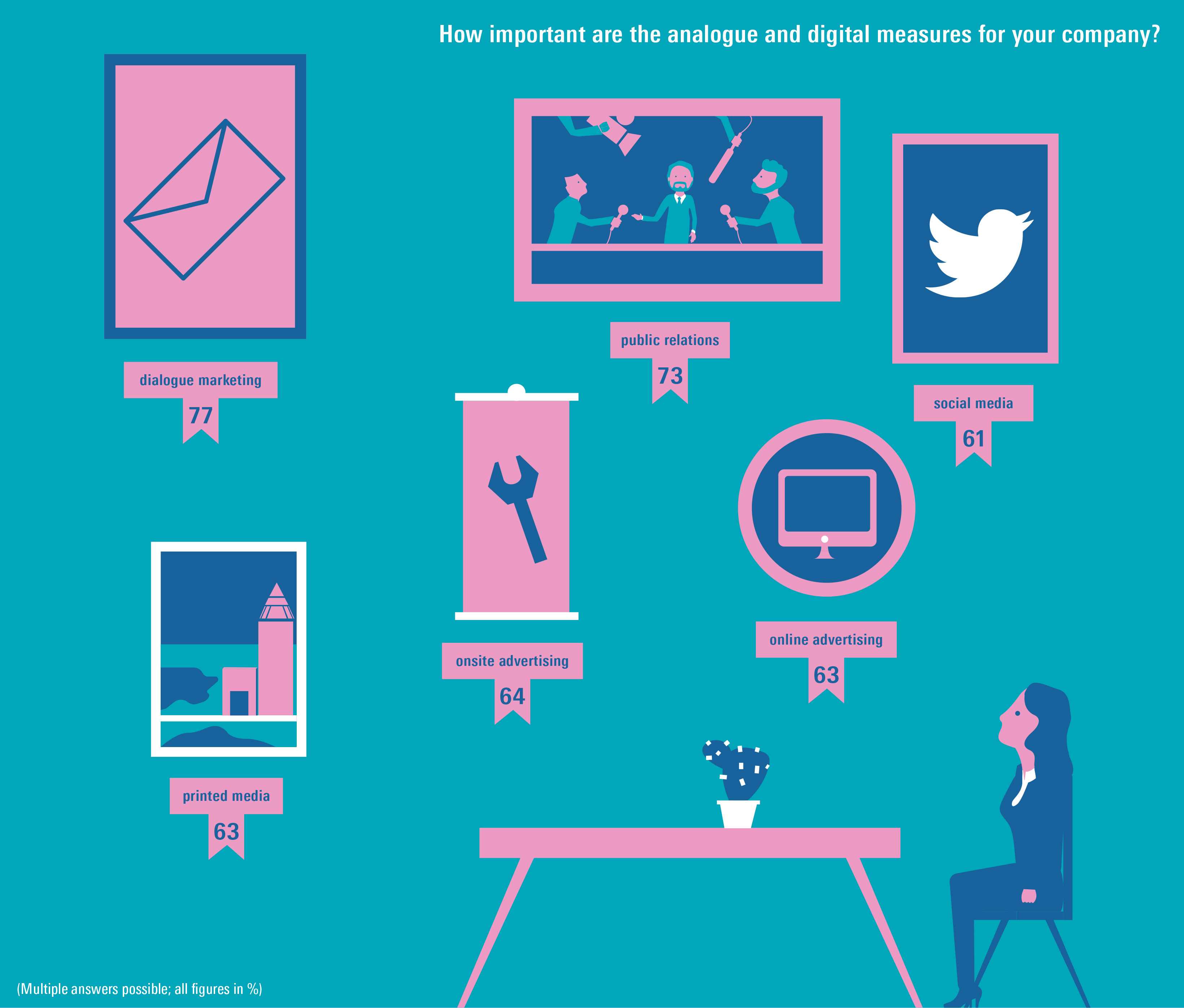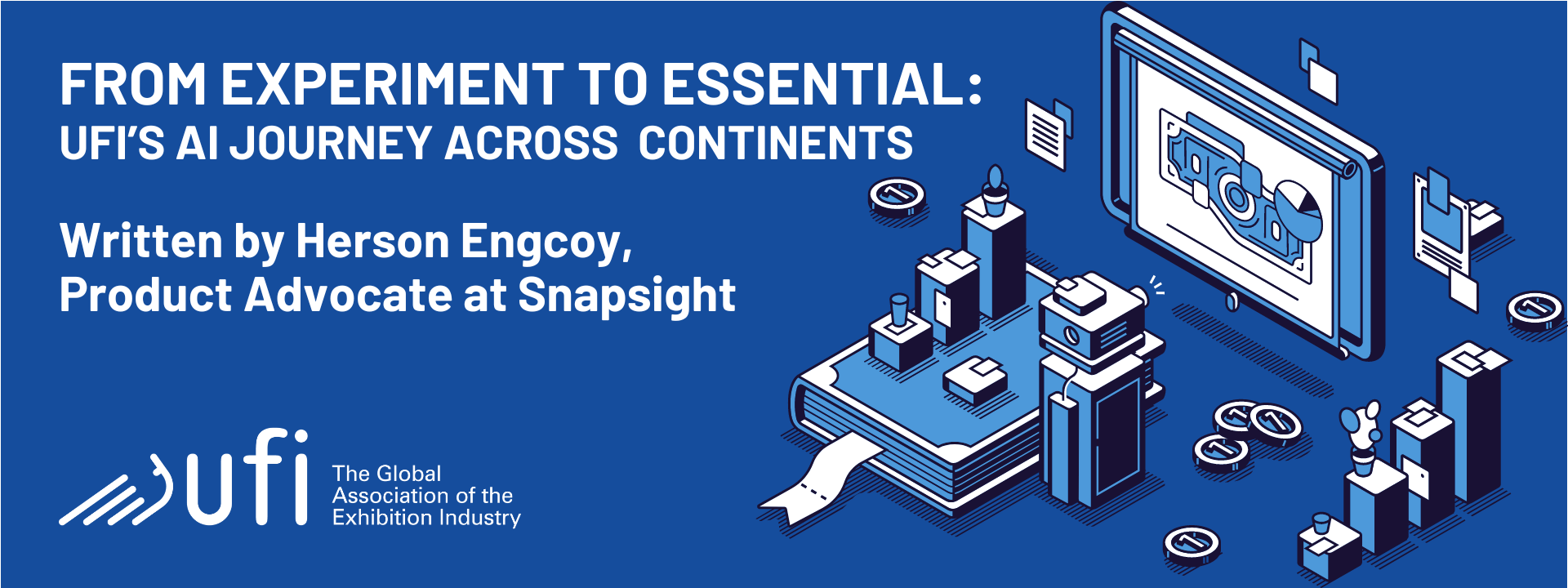
Blogger: Klaus Reinke is Chief of Corporate Strategy & Organisation and a member of Messe Frankfurt’s management team.
Digitalization not only forces companies to rethink their production processes, technology and IT, but rather consists of developing a comprehensive strategy for digital business transformation. The same applies to the increasingly digital marketing world and marketing activities related to trade fairs.
With its “Digital Business Transformation” study, Messe Frankfurt’s Dexperty team of digital experts illuminated the current state of development in this area in the summer of 2015. The study documented a clear discrepancy between companies that are taking a very strategic approach to implementing their digital projects and constantly rethinking their change processes, and a larger number of latecomers, who are just beginning development and should derive suggestions for the own strategies from the best-practice results.
The 613 respondents consisted of both marketing and IT decision makers, who are responsible for digital business transformation.
But what about digital marketing specifically for trade fairs?
Especially when it comes to marketing, many companies still have underdeveloped strategies for implementing digital transformation and some don’t even have a strategy at all. While conventional tools such as print advertising are losing importance, digital marketing is rapidly becoming increasingly significant. A particularly interesting result from the perspective of trade fair organizers is the fact that the popularity of trade fairs remains high for German marketing managers. 67 percent of those surveyed for Dexperty’s study indicated that they continue to use trade fairs as platforms.

When marketing their trade fair presentation, over 70 percent of the marketing decision makers rely on dialogue marketing and media relations, and over 60 percent consider these to be the most important tools. Onsite advertising on the trade fair grounds, social media activities, online advertising and year-round presence on the organizer’s online platforms were considered important for the success of the fair by just over 50 percent of the respondents. Print advertising has remained at the same level, but lost further ground to online outlets.
Independent of the study, it is noticeable that the communication tools for trade fairs has undergone significant enhancement in the last ten years due to digital offerings. Placement and advertising in online match-making portals, mobile apps or exhibitor searches, digital catalogues or social media in combination with multimedia content are the future of trade fair marketing. The consistently high usage and relevancy values for almost all of these tools also indicate that marketing decision makers are rebuilding their marketing highlights using integrated and multi-faceted communication.
Organizers have also invested considerably in this area and created a wide range of offerings to optimize digital networking with the trade fair community.

When compared to the Dexperty study “Communication in the trade fair environment” (2014), it is obvious that digital transformation is proceeding at a veritable speed. This is also seen in what has become a significant percentage of digital measures in the trade fair budgets. After all, 70 percent of the respondents allocate up to 20 percent of their trade fair budgets for digital activities and another 21 percent even more.
You can learn more about best-practices with regard to digital transformation here.






Leave A Comment